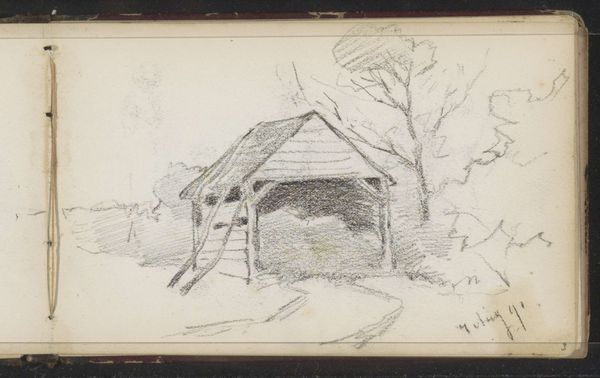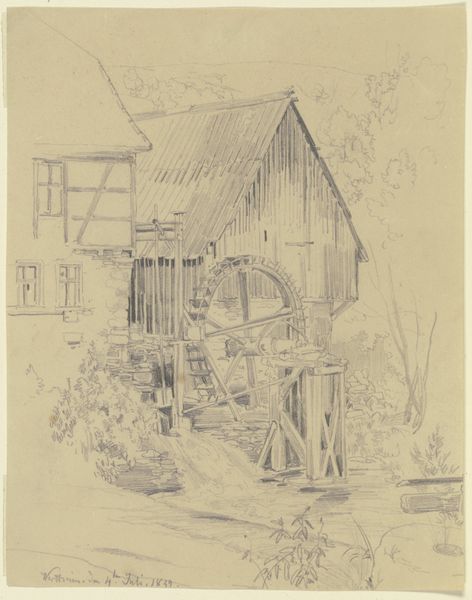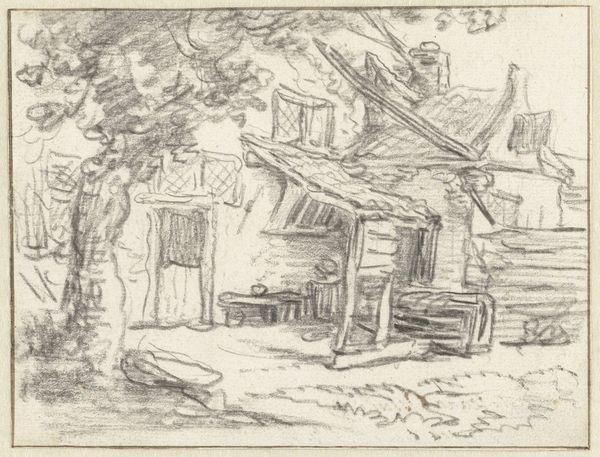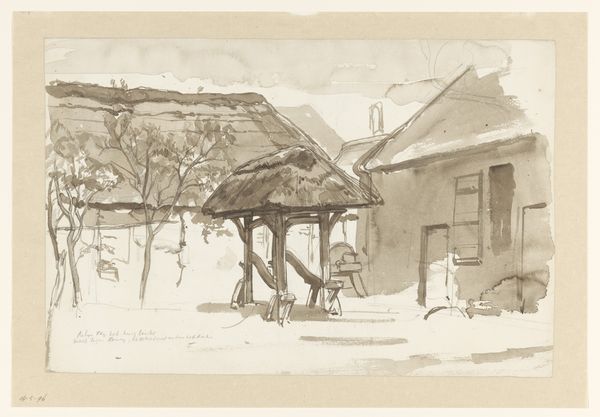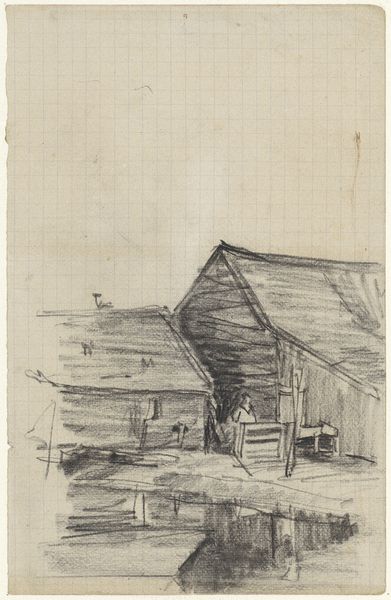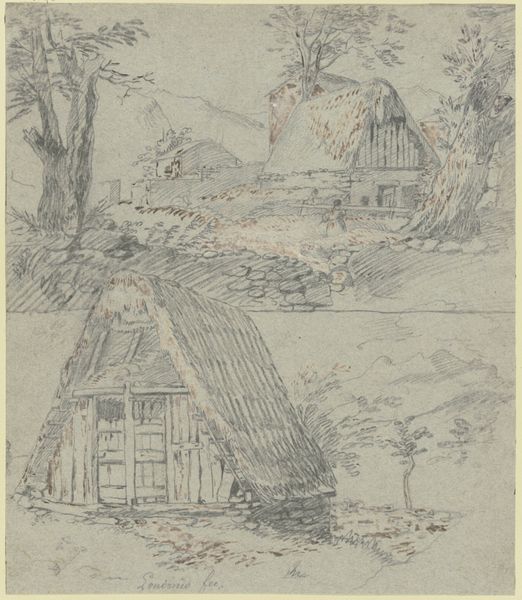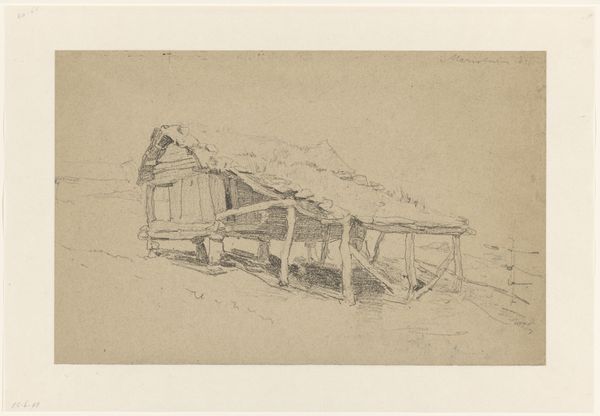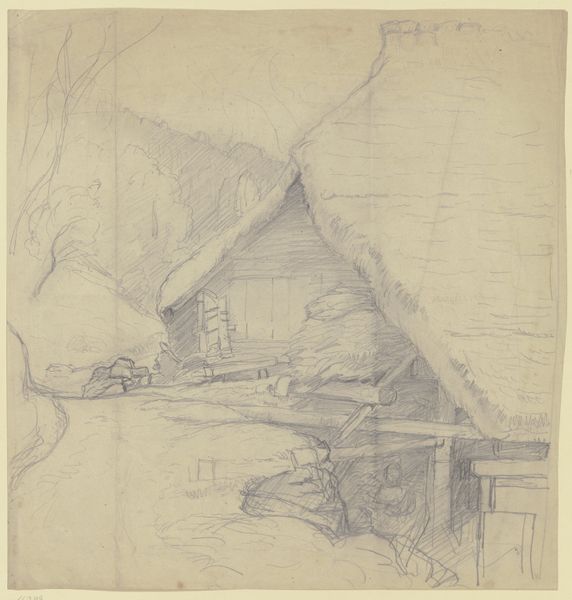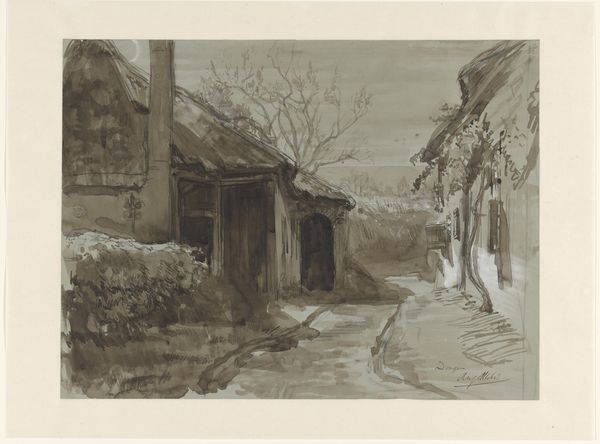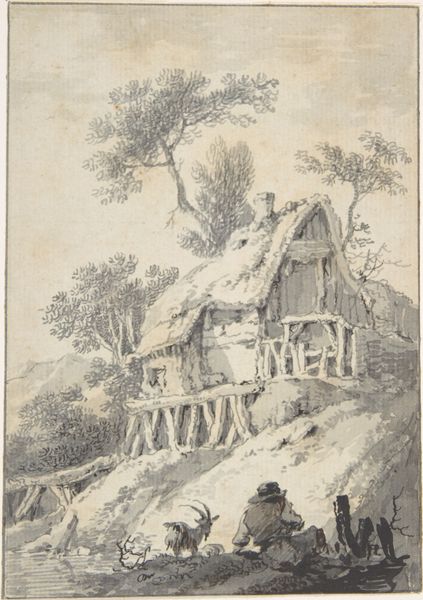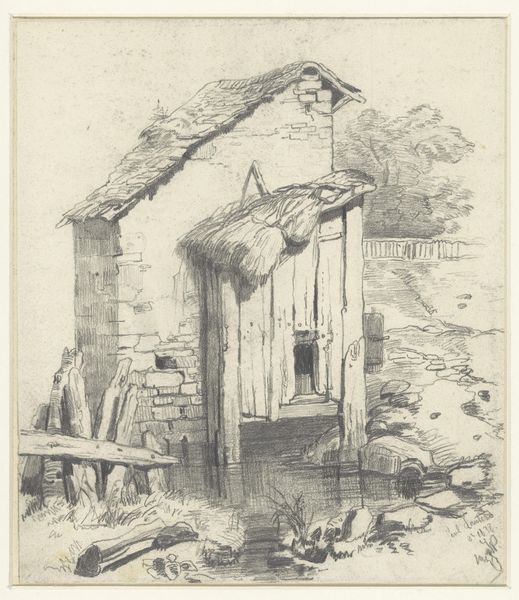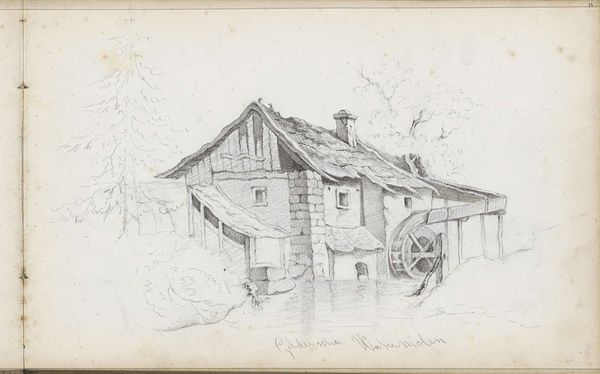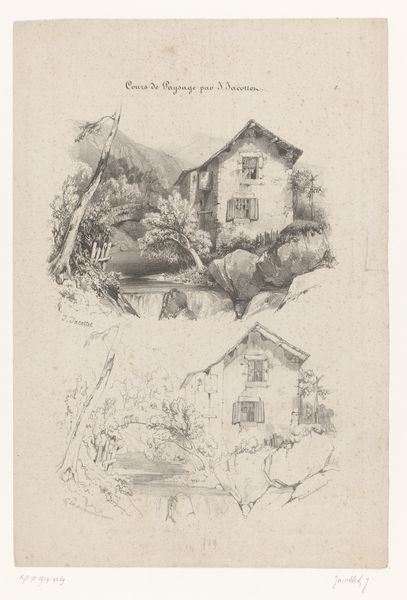
Dimensions: height 270 mm, width 220 mm
Copyright: Rijks Museum: Open Domain
Frederik Hendrik Weissenbruch created this pencil drawing, "Watermill in a Hilly Landscape," sometime in the mid-19th century. During this period, the Netherlands experienced significant social and economic changes. Weissenbruch, associated with the Hague School, often depicted rural scenes, reflecting a nostalgic view of traditional Dutch life amidst increasing industrialization. This drawing captures a rustic watermill, a symbol of pre-industrial labor and harmony with nature. The choice of subject matter and the detailed rendering highlight the artist's interest in preserving a disappearing way of life. The Rijksmuseum, where this drawing is housed, plays a crucial role in preserving and presenting Dutch cultural heritage. Understanding this artwork requires considering the historical context. We might examine economic records related to milling or social studies of the period to better understand the place of the watermill in the cultural imagination. In doing so, we appreciate how art reflects and responds to the social conditions of its time.
Comments
No comments
Be the first to comment and join the conversation on the ultimate creative platform.
